
To my eye, the aircraft looks dangerous, both to the enemy and to its own pilots. Its “difficult” reputation is well-known, and right from the outset, you are aware that it needs to be treated with a great deal of respect.
As you walk up to the 109, you are at first struck by its small size, particularly if it is parked next to a contemporary American fighter. Closer examination reveals a crazy-looking, knock-kneed undercarriage, a very heavily framed, sideways-opening canopy with almost no forward view in the three-point attitude, a long rear fuselage and tiny tail surfaces.
A walk around reveals ingenious split radiator flaps and ailerons with a lot of movement and rather odd-looking external mass balances. It also has independently operating leading-edge slats. These devices should glide open and shut on the ground with the pressure of a single finger. Other unusual features include the horizontal stabilizer that doubles as the elevator trimmer and the complete absence of a rudder trim system. Overall, the finish is a strange mix of the innovative and archaic.
To enter the cockpit, you climb on board and gently lower yourself downward and forward while holding on to the windscreen. Once inside, you are almost lying down, as you would be if driving a racecar. The cockpit is narrow, and if you have broad shoulders (don’t all fighter pilots?), it is a tight squeeze. Once strapped in—itself a knuckle-rapping affair—you can take stock.
First impressions are of its simplicity. From left to right, the co-located elevator trim and flap trim wheels fall easily to hand. You need several turns to get the flaps fully down to 10 degrees, and the idea is that you can crank both together. In practice, this is a little difficult, and I tend to operate them independently.
This story is from the April 2020 edition of Flight Journal.
Start your 7-day Magzter GOLD free trial to access thousands of curated premium stories, and 9,000+ magazines and newspapers.
Already a subscriber ? Sign In
This story is from the April 2020 edition of Flight Journal.
Start your 7-day Magzter GOLD free trial to access thousands of curated premium stories, and 9,000+ magazines and newspapers.
Already a subscriber? Sign In

Keeping 'em Flying!- The new generation of warbird pilots, restorers and mechanics
The new generation of warbird pilots, restorers and mechanics. Nearly 80 years after the end of World War II, the fighters, bombers, and trainers that defended freedom continue to enthrall and inspire audiences at airshows, thanks to generations of warbird pilots, maintainers, restoration specialists and collectors. In our September, 2022 issue we introduced you to the young warbird pilots, maintainers and restorers who are already beginning to displace more "experienced" warbird fliers and fixers.

The Corsair Maker- Bringing the Vought Corsair to the fleet was a daunting challenge that spanned nearly three years.
When the first production Corsairs exited the Stratford factory in June 1942, Guyton, as seen here, was tapped to manage the flight and production test program. Armament was improved to six wing-mounted .50s, displacing the wing fuel tanks now placed forward of the cockpit which necessarily was moved rearward by 32 inches. Overall length was increased, armor plate added, landing, arresting and tail gear improved, aileron control enhanced, and a new version of the R2800 engine was incorporated. But those significant improvements unearthed numerous idiosyncrasies that would take an extended period to make the Corsair acceptable for carrier operations
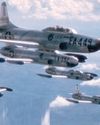
STARFIRES Over Korea
F-94 pilots tangle with MiGs
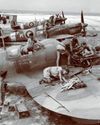
Training Mission
BY THE TIME THIS TRAINING SCENE WAS RECORDED in Canne, Italy, in July 1944, Allied Yugoslavian airmen had several years of experience working side by side with the RAF.
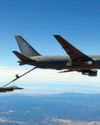
KC-46A PEGASUS
Next generation aerial refueler
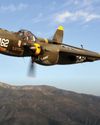
"SATAN'S ANGELS" ACE - Tales from a P-38 pilot in the South Pacific
\"AS A KID GROWING UP on the bow of my father's tugboat, hauling oil from Seattle to Alaska, I had a lot of time on my hands.
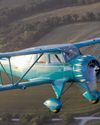
WACO YKC - Stunning and Ultra Rare Golden Age Cabin Flier
BETWEEN THE IMPLEMENTATION of the Air Commerce Act of 1926 and December 31, 1948, all U.S. registered flying machines sported an N-number, much as they do today, the \"N\" being an internationally recognized identifier for the United States. During that period, however, an additional letter-identifier followed the \"N.\" Depending on their category, they were registered in the NC (Commercial), NG (Glider), NL (Limited), NR (Restricted, usually meaning race airplanes), NS (State government), and, finally, NX (experimental).
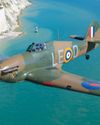
BADER'S HURRICANES
Double amputee fighter ace Douglas Bader and his Battle of Britain Hurricanes
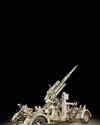
Scourge of the Allied Fighters
IT HAD TO BE THE MOST HELPLESS FEELING in the world: you're at 25,000 feet over Europe knowing that your primary function is to drop bombs-or flying escort for the bombers while being a slow-moving target for some of the world's finest shooters. However, you have John Browning's marvelous .50 caliber invention to give some degree of protection. Unfortunately, you're absolutely helpless against flak. Piloting and gunnery skills play no role in a game where sheer chance makes life and death decisions. For that reason, the Krupp 88 mm Flak 18/36/37 AA cannon could be considered WW II's ultimate stealth fighter. You never saw it coming.
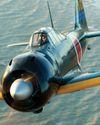
ZERO MYTH, MYSTERY, AND FACT
A test pilot compares the A6M5 Zero to U.S. fighters